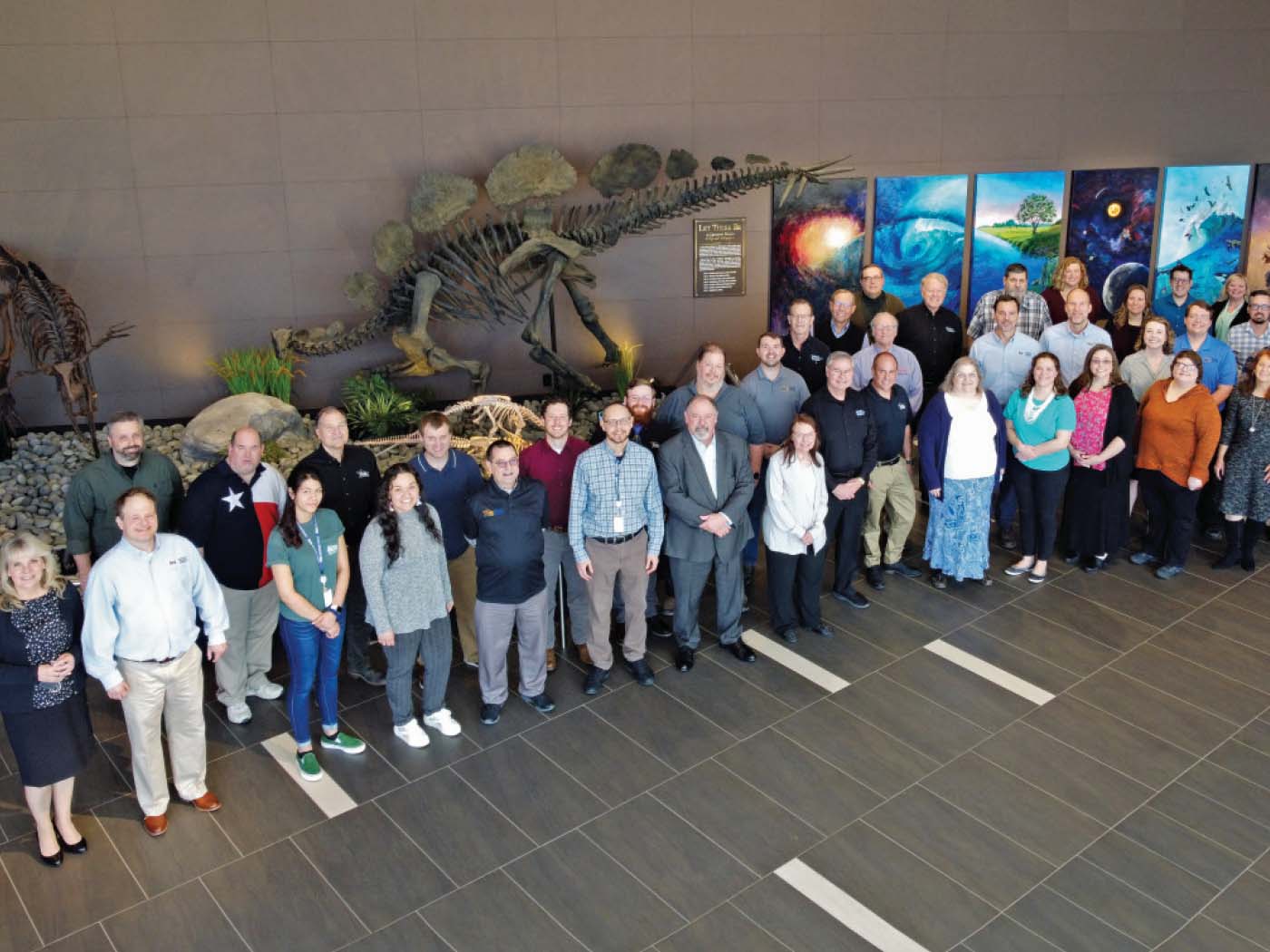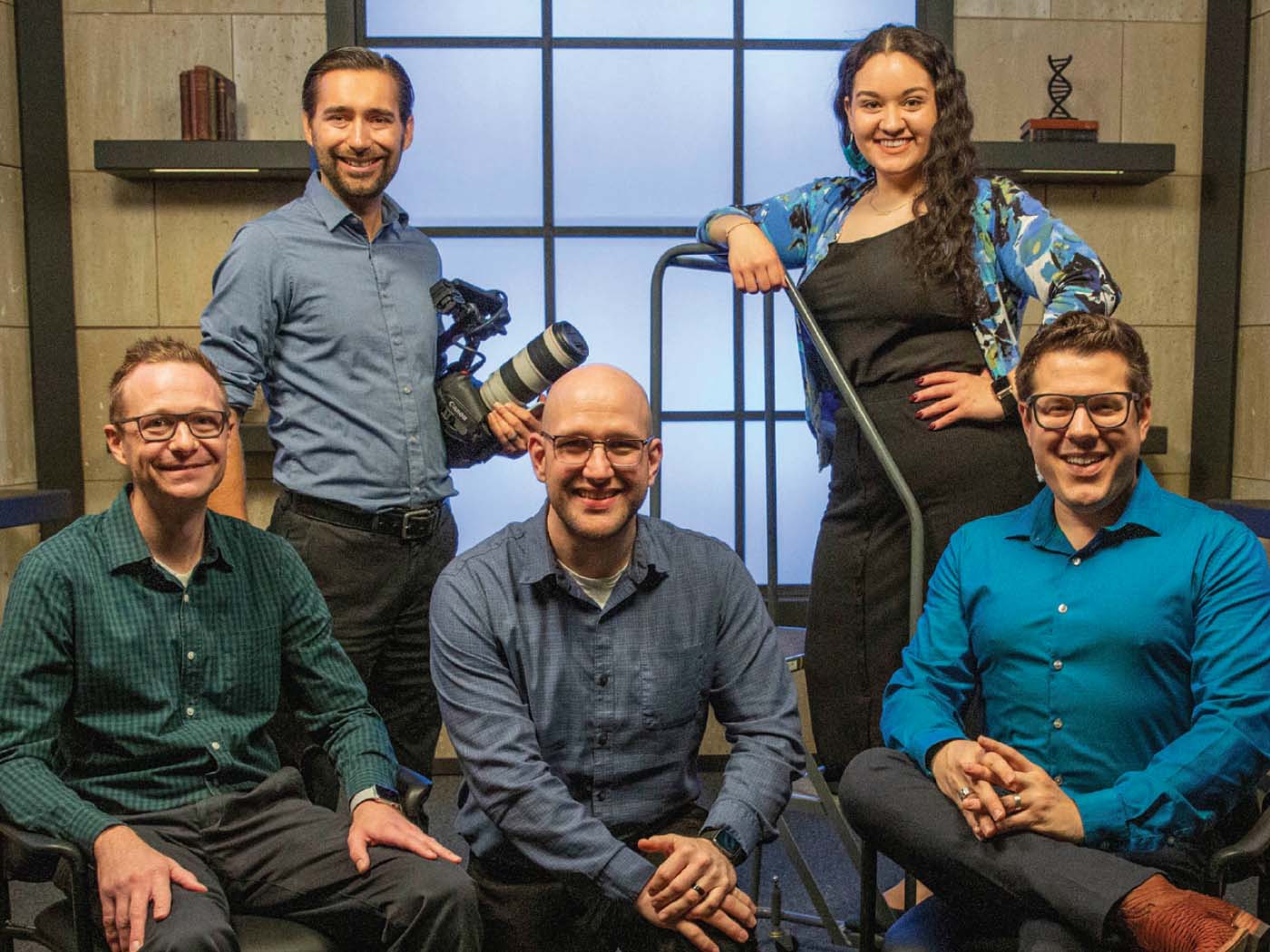To help others understand that Christ is their Creator, use the approach the Bible says always provokes a living conscience: "For the invisible things of him from the creation of the world are clearly seen, being understood by the things that are made" (Romans 1:20). Simply using humanity's natural tendency to deduce the fact that complex design requires a designer is more powerful in showing the handiwork of Christ than evidence from fossils or genetics--and it's easier.
It's no surprise that psychological research shows that creation-based thinking comes naturally, while evolutionary thinking is not natural. This is an integral trait of every human--and it is never going away. When believers see the underlying attributes of design, they can communicate that to others to help them understand that what they see in nature was, in fact, designed.
Discussing Design Naturally Connects with People
Begin by using the word purpose--which definitively captures the very essence of design--early and often. This word is also an ideal bridge to human inquisitiveness. Given an object, people naturally reason first about how it works and its intended function. Research shows that humans are naturally compelled to seek explanations of purpose, with "pleasure" areas in the brain being rewarded when it is discovered, but are left feeling frustrated when explanations are elusive. The process of discovering purpose is captivating and emotionally stimulating, similar to the experience of unwrapping a present.
Also, people intuitively link purpose with intelligence. This predisposition is not culturally or religiously transmitted, but appears to be instinctive.1 If asked where an animal came from, young children--in all cultures--naturally say, in essence, "God made it."
The engineering and legal professions have formally recognized the concept that human insight sensibly links purpose and design in everyday life. According to the Accreditation Board for Engineering and Technology definition for design, "Engineering design is the process of devising a system, component, or process to meet desired needs."2 Societies rely on the legal consequences of purposeful intent to guarantee performance. Precise language is commonly included in construction contracts--specifically, to obtain from contractors a final product that satisfies a purpose. This is so crucial that even if a contract lacks a precise statement of performance, courts during a dispute usually imply a purpose that legally deems a project complete when it functions "fit for its intended purpose."
What is superior about nature is that people can be challenged to look around at leaves, grass, feathers, fur--indeed anything--and see whether it fulfills its purpose(s). It is like the Lord has given a humanly unparalleled performance guarantee that whatever He builds is always suitable for its purpose.
After establishing the basic concept of purpose, couple it to the word fit. People easily see when things match or complement each other. When things fit (a principle at the heart of design), a clear-cut mental impression is made: Humans perceive that when things are a perfect fit, they were meant to work together.
Fit can be pointed out everywhere. Creatures are superbly fit to their specific environments (such as fish in their water world), but their body parts also fit precisely, and even the structures of their molecules fit just right. Therefore, reinforce what studies already show: People resist, by nature and experience, explaining great fit--especially by random chance--with anything other than great design. Using the words purpose and fit is like pushing the buttons corresponding to design in people's minds.
Be Confident That Everybody Comprehends Design in Nature
Some evolutionary psychoanalysts assert that people are naturally constrained with a "very specific cognitive glitch" when it comes to understanding their origins. They find this "puzzling"1 and some get "angry"3 that more Americans believe in angels than in evolution. The real reason for this "glitch" is simple. Everywhere that people--even ardent evolutionists--look, nature teems with complex creatures that clearly appear to have been designed.
In 1859 in a section of his book The Origin of Species entitled "Organs of Extreme Perfection and Complication," Charles Darwin recognized that nature appeared to have been designed. Little had changed by 1971, when French biologist and Nobel winner Jacques Monod commented on what alien beings (via a computer on earth) would observe by merely studying a colony of bees:
The extreme complexity of their structure…is reproduced with extraordinary fidelity from one individual bee to the next. Powerful evidence, is it not, that these creatures are the products of a deliberate, constructive, and highly sophisticated order of activity?4
Richard Lewontin, the Alexander Agassiz Research Professor at Harvard, once eloquently said:
Life forms are more than simply multiple and diverse, however. Organisms fit remarkably well into the external world in which they live. They have morphologies, physiologies and behaviors that appear to have been carefully and artfully designed to enable each organism to appropriate the world around it for its own life.5
Even today's most vocal evolutionist, Richard Dawkins, affirmed that "biology is the study of complicated things that have the appearance of having been designed for a purpose."6 It is vitally important to understand, however, that Lewontin and Dawkins used the word "appear" quite literally to mean that things only seem like or look as if they are designed, giving the illusion of a real designer.
Suddenly, the real issue becomes crystal clear--namely, not whether design actually exists, but what the best explanation is for the origin of fit, function, and design. Either the design flows from a real designer and is genuine design--the naturally favored reason--or there is no designer and the "apparent" design everyone clearly sees is all a false impression, which is a tough sell for evolutionists.
Learning a Short Example
Consider making this point by using something like the three precisely shaped bones in the human middle ear.7 Suspended by thread-like ligaments, these span the space from the eardrum to the sound-sensing organ called the cochlea. They fit together seamlessly, connected with tiny lubricant-filled joint capsules that enable interactions sensitive enough to detect sound vibrations from 20 to 20,000 times per second.
Sound intensities can be heard from a pin drop to more than 10 million times as intense, in part because these bony interactions allow sound waves collected in the air by the eardrum to be amplified 20 times--which matches exactly with sound transmission properties of the fluid in the cochlea. Yet in response to loud noises, the bone's efficient vibratory interactions can be damped in a split second by two very small attached muscles that reflexively contract, thus protecting the bones and cochlea from damage.
Evolutionists claim that these bones' fit and function only appear to be the work of a real designer. They earnestly contend that during reptilian evolution, two bones involved with the hinge-jaw of certain reptiles migrated (while changing shape) from the jaw to the middle ear and connected to an existing bone, thus becoming the three inner ear bones of mammals.8 Creationists maintain that a real designer is a better explanation for the exquisite design of human middle ear bones.
Pulling It All Together
Elite scientific culture is not popular culture, so the mental process of most people, Christian and non-Christian, still functions normally in attributing design to a designer.1 This is true in any society, particularly with young people. Conversations can be readily started, for example, by saying, "I read something about how the three tiny bones in your ear confer great capabilities for hearing." Be sure to include enough details describing precise fit and purpose to highlight design and to keep the topic interesting. Most people will listen since: 1) once engaged, people have an almost irresistible urge to know how and why things work; and 2) there is an emotional thrill tied to "discovery"--particularly if the brain is tantalized as information unfolds bit-by-bit.
The main issue is the best explanation for the design apparent in nature. Be prepared to explain the standard evolutionary story if asked, but clearly state that after examining alternative explanations, you remain persuaded that the best reason for design is a real designer--a conclusion consistent with everything humans know intuitively and by experience.
Perhaps someone may be ready to know that Designer, the Lord Jesus Christ, and by knowing Him enter into eternal life (John 17:3). This is not exploiting a "cognitive glitch" of humans, but using the witness of design that the Lord has provided. The things the Lord has made are so astounding that He's made it easy for people to see Him as their Creator, and hard--to the point of suppressing what is obvious--to deny Him.
References
- Bering, J. Creationism Feels Right, but That Doesn't Make it So. Scientific American, posted on sciam.com March 19, 2009, accessed March 19, 2009.
- ABET Definition of Design. The University of Nevada, Las Vegas. Posted on me.unlv.edu, accessed December 1, 2009.
- Dawkins, R. The Angry Evolutionist. Newsweek. Posted on newsweek.com September 25, 2009, accessed December 1, 2009.
- Monod, J. 1971. Chance and Necessity: An Essay on the Natural Philosophy of Modern Biology. New York: Alfred A. Knopf, 7.
- Lewontin, R. C. 1978. Adaptation. Scientific American. 239: 213.
- Dawkins, R. 1986. The Blind Watchmaker. London: W. W. Norton & Company, 1.
- For a book of examples, see Guliuzza, R. 2009. Made in His Image. Dallas, TX: Institute for Creation Research.
- Gilbert, S. F. 2006. Developmental Biology, 8th ed. Sunderland, MA: Sinauer Associates, 17 and 742.
* Dr. Guliuzza is ICR's National Representative.
Cite this article: Guliuzza, R. 2010. Fit & Function: Design in Nature. Acts & Facts. 39 (2): 10-11.




























